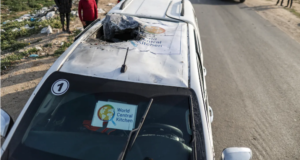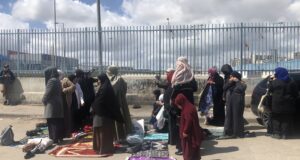10th June 2016 | International Solidarity Movement | occupied Palestine
Late on Wednesday night, two Palestinians from the West Bank town of Yatta opened fire in a Tel Aviv shopping center, killing four Israelis, and injuring sixteen. The shopping center stood adjacent to the Israeli Ministry of Defense, fueling speculation that the attack may have been inspired by the recent appointment of Avigdor Lieberman, leader of the right wing Yisrael Beiteinu party and illegal settler, to the position of Israeli Defense Minister. The two Palestinians are currently in Israeli custody, one of whom was wounded during the shoot-out.
Lieberman’s response to the first major crisis of his career, has been brutal. The entire town of Yatta (Population 64,277) has been closed off, with all Palestinians except emergency services barred from entering or leaving. Additional reports suggest that the Israeli Military has also taken the first steps toward demolishing the family homes of the two attackers. In addition to the closure of Yatta, the military has also announced that it is revoked all permits for Palestinians from the West Bank wishing to cross the green line in order to visit family, prisoners, or pray at al-Aqsa Mosque during Ramadan – approximately 83,000 permits in total will be revoked. Palestinians with Israeli work permits will still be allowed to make the crossing. In addition, two battalions of troops will be sent to the West Bank.
These tactics; permit restrictions, house demolitions, and closure of entire towns constitute collective punishment. Collective punishment, the practice of enacting revenge on the friends, family, or community of a criminal or combatant, is illegal under the fourth Geneva Convention. Israel has been widely condemned for using this tactic as a deterrent to Palestinian resistance. In this instance, close to 150,000 residents of the West Bank will be punished for the actions of just two.
 International Solidarity Movement Nonviolence. Justice. Freedom.
International Solidarity Movement Nonviolence. Justice. Freedom.


